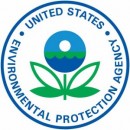
Here we go right into December—the beginning of meteorological (vice astronomical) winter. Brrrrr! Cold and snow are now impacting much of the nation, so let’s all make sure we help our employees cope safely, with prompt snow and ice removal at our workplaces, careful attention to employees that have to work outside, and keeping an eye on the forecast so our sites are ready for incoming weather. Meanwhile—dream of spring! Here’s the week’s rather buys and impactful regulatory news:
PHMSA
The agency published a notice to provide awareness and solicit comments on an application for a special permit currently under its review in consultation with the Federal Railroad Administration. An applicant is seeking a special permit to authorize the transportation in commerce of cryogenic ethane in DOT– 113C120W9 and DOT–113C120W tank cars via rail freight. The subject matter of the special permit—i.e., transportation of cryogenic flammable liquids in rail tank cars— raises issues similar to the transportation of Liquefied Natural Gas (LNG) by rail, a matter for which multiple rulemakings are currently pending at the agency. Therefore, PHMSA is providing an opportunity for public comment on the application. Comments must be received by January 4, 2023.
USPS
The post office has published a final rule and a proposed rule (NPRM) that will both significantly affect the way that its customers using the service to ship hazardous materials will prepare and consign such goods. Shippers using the post office for hazmat shipments should carefully examine these new requirements.
The final rule:
The Postal Service is amending Publication 52, Hazardous, Restricted, and Perishable Mail (Pub 52), to incorporate new requirements for mailers to separate, into identifiable containers, all hazardous material (HAZMAT) requiring hazardous marks or labels from other mail when tendering to the Postal Service. Additionally, the Postal Service will now require used, damaged, or defective electronic devices (excluding devices that are new in original packaging, and manufacturer certified new/refurbished) containing or packed with lithium batteries to be mailed only via surface transportation and to bear specified markings. This rule is effective December 1, 2022. See it here:
The proposed rule:
The Postal Service proposes to provide unique electronic service codes and to standardize extra service options for shipments of hazardous materials. If adopted, this proposal would amend Publication 52, Hazardous, Restricted, and Perishable Mail (Pub 52) by requiring the use of unique service type codes and extra service codes within the electronic data submission and tracking barcodes for shipments containing HAZMAT provided to the USPS by the mailers in their Shipping Services File (SSF). This proposal would standardize the acceptance and handling of shipments containing HAZMAT by collecting electronic data to create manifests for the Postal Service’s air carrier suppliers and ensuring these items are handled appropriately with regards to the category of HAMZAT contained within the package.
Comments on this proposal are due no later than December 30th, 2022. See the NPRM here.
Transport Canada
Most US hazmat shippers are aware of the DOT’s “HM-215-“ series of rules that help keep the 49 CFR up-to-date with the international rules in the UN Model Regs. This process is called harmonization. All national competent authorities have to engage in this process to keep their own regulatory texts up to date. Right now, it’s Transport Canada’s turn. The ministry has published a proposal to amend the Canada TDGR to harmonize it with the most recent changes incorporated into the UN regulations. Shippers within Canada should have a look at the proposal to see how it may impact their operations. Comments on the proposal are due to Transport Canada by February 9th, 2023. The lengthy proposal and ways to comment can found here.
The ministry also published a new rule that modifies how biological samples are to be classified and shipped depending on the known status of their origin. See the rule and guidance here.
Labelmaster is a full-service provider of products, shipping and training software, and professional consulting services to assist the DG and HS&E professional to comply with national and international regulations. See our full line of solutions at www.labelmaster.com.


